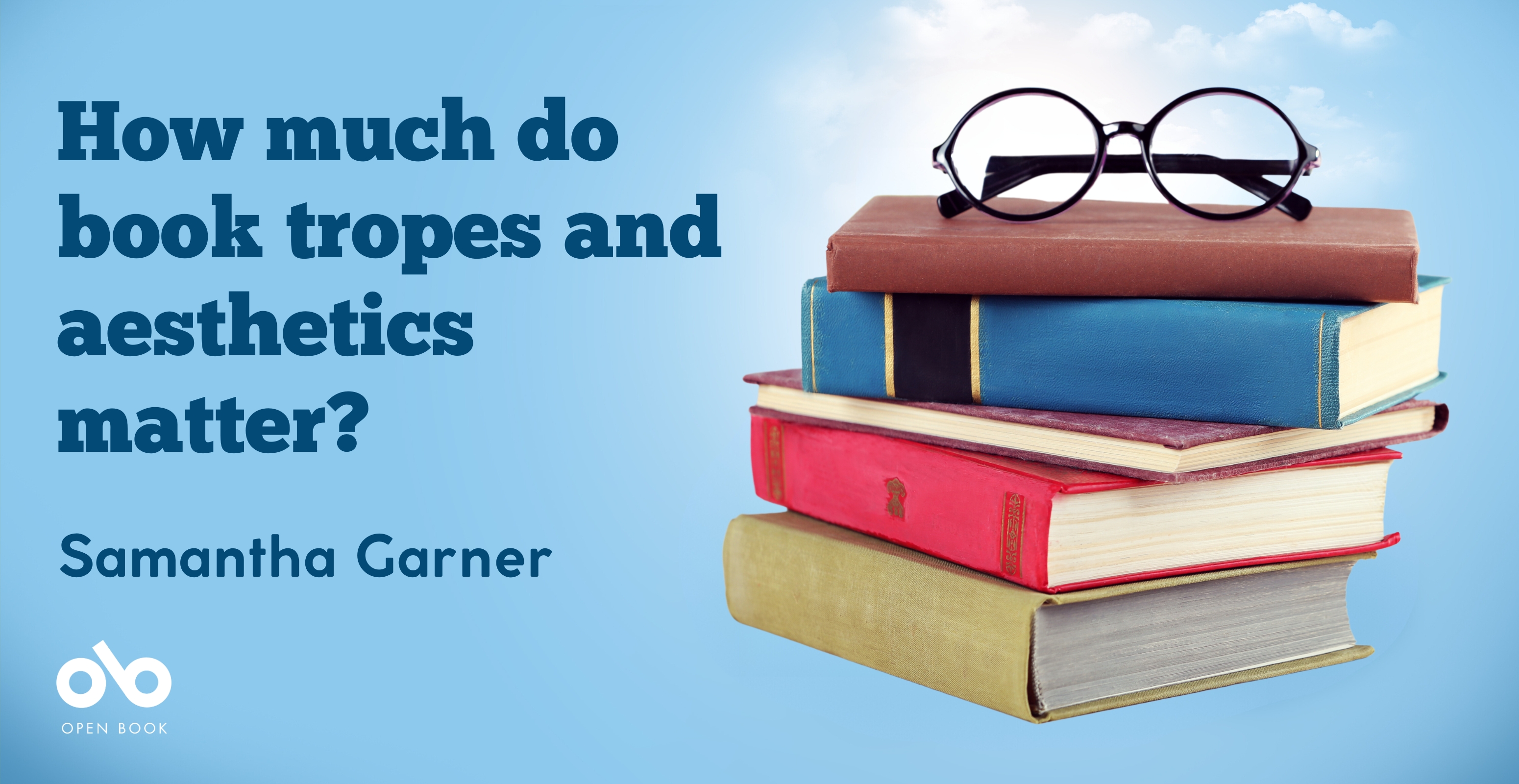How Much Do Book Tropes and Aesthetics Matter?
By Samantha Garner
If you’ve spent time on Twitter or Instagram recently, you may have noticed authors and readers sharing graphics that outline a book’s major tropes, or the aesthetics of a book through mood boards.
I’ll be honest – I had a visceral reaction against these images when I started noticing them. “Scoff!” I’d said, “You can’t reduce years of creative work into a handful of puny elements!” I’d decided they were vapid.
And then I noticed myself paying more attention to these graphics, becoming interested in a book based on tropes highlighted or the overall feeling of a mood board. I was intrigued by the way people pulled out elements that I may not have known about from just reading reviews. And as a mood reader, I can’t deny that sometimes I crave a book with a particular element or feeling.
Here’s why book trope graphics and aesthetic mood boards can help authors with book marketing, or help readers find new books.
Book trope graphics convey niche information at a glance
Book trope graphics typically follow the same format: In the centre of a square image is a book’s cover, with several arrows drawn from the cover to a list of tropes or elements that surround it. Some examples include: “strong female characters,” “depression representation,” “multiple POVs,” “slow burn romance,” “cozy fantasy,” or “tarot card symbolism.”
Tropes have likely evolved since you learned about them in high school English class, and now commonly refer to recurring genre conventions, character types, situations, and motifs. Many readers of genre fiction such as romance, fantasy, and horror have tropes they really like, and tropes they don’t. This is one reason book trope graphics appeal to many – they specifically highlight appealing features that aren’t typically disclosed in other forms of marketing or publicity. This isn’t limited to genre fiction, either. Tropes exist in all creative work – literary fiction and non-fiction included!
This style of graphic lends itself well to expanding outside of tropes, too. In fact, you may have noticed that some of the items in my example above aren’t tropes at all, but simply elements to be found in the book, or ways to classify it. Book trope graphics can also be used to quickly convey information about genre, plot, themes, audience, mood, style, and topic.
If you’re an author promoting a book or a reader sharing recommendations, you might find book trope graphics a fun and unique way to help people discover new work.
Your CanLit News
Subscribe to Open Book’s newsletter to get local book events, literary content, writing tips, and more in your inbox
Book aesthetic mood boards give a sense of mood and tone
Have you ever considered a book’s aesthetic? And by that I don’t mean its cover. If you could take a photograph from within a book, what would it look like? What ideas would it convey about the book’s mood, style, tone, and characters? How much would those things matter to you?
Book mood boards, or book aesthetics, are another highly visual way to quickly give a prospective reader an impression about a book. A novel set in Victorian England, for example, could feature a collage of photos of a stream train, a gas lamp flickering against an ornately-papered wall, a skyline of factories belching smoke, and people wearing era-appropriate clothes, respectively. With just a few images, readers can get a sense of this book’s world, mood, and characters.
These images don’t have to be literal representations of a book’s elements. Rather, they’re meant to give impressions, to form a connection in a reader’s mind between the feelings the mood board conveys and the book in question. I’ve personally also found them helpful in my initial stages of writing, when my novel is very much “no plot, just vibes.” It anchors me to the world I’m creating and helps me feel less like I’m wandering in a fog with my arms flailing about.
So, how much do book tropes and aesthetics matter in marketing or recommending books? If you’d asked me a year ago, I would have said, “not much!” But now, I’ve seen the light. Attention spans are dwindling, and our brains process visual information 60,000 times faster than text – so why not make these things work to your advantage and have fun doing it?
The views expressed by Open Book columnists are those held by the authors and do not necessarily reflect the views of Open Book.
Samantha Garner is the author of The Quiet is Loud, shortlisted for the 2022 Kobo Emerging Writer Prize. A Canadian of mixed Filipino-Finnish background, her character-driven fantasy novels explore themes of identity and belonging. When not writing, Samantha can be found daydreaming in a video game or boring a loved one with the latest historical fact she’s learned.
She can be found online at samanthagarner.ca and on Instagram and Twitter at @samanthakgarner.



